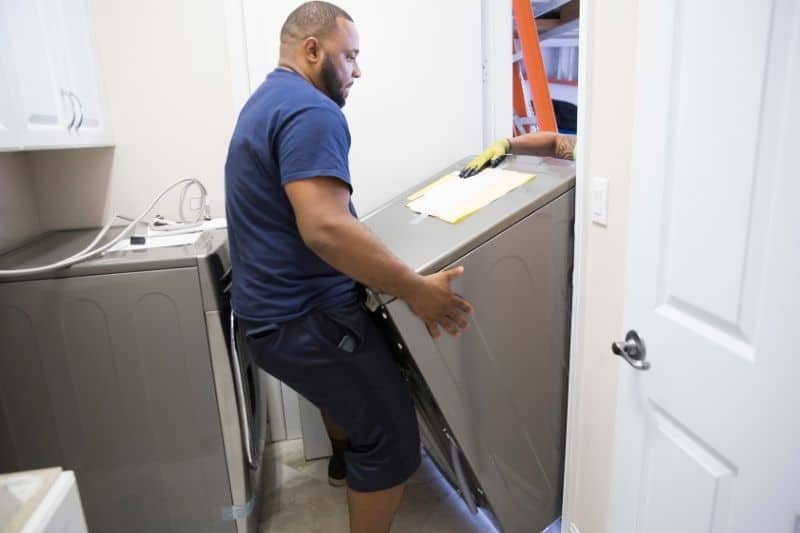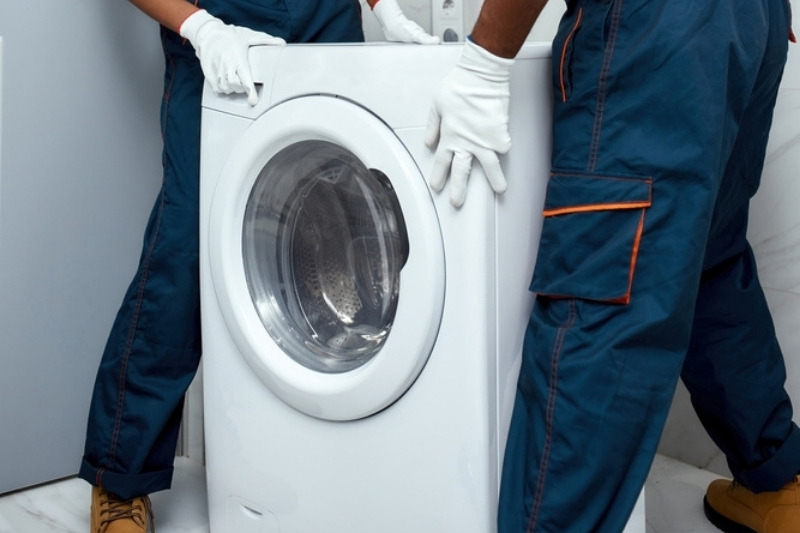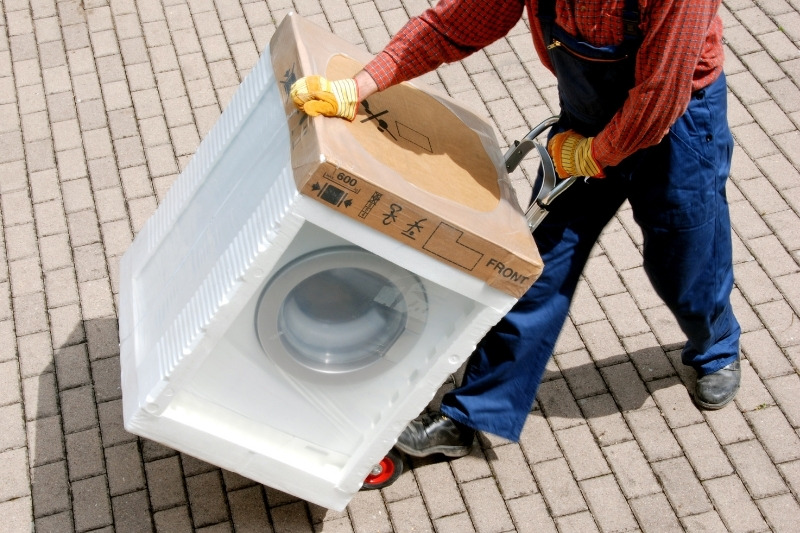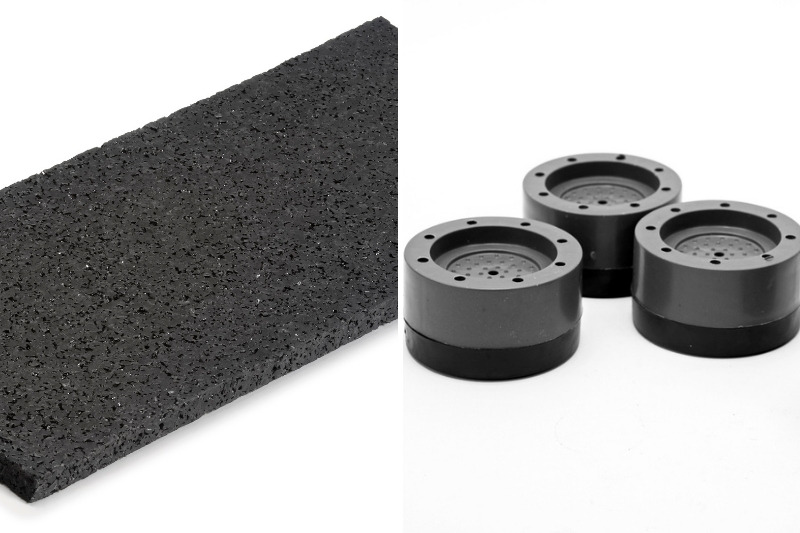Whether you’ve got a brand-new washing machine that needs setting up or you’re moving an existing washer to a new spot, you need to level the appliance before you use it to do laundry.
Failing to level your washing machine means that you’ll have an extremely noisy machine to contend with. It may also vibrate so much that it starts shuffling forwards and out of its space.
Nobody wants a rowdy washing machine chasing them around the house, so there’s only one thing for it! Level the machine properly.
But how do you level a washing machine? Keep on reading to find out what you need to do.
How to Level a Washing Machine
Below you’ll find a step-by-step guide to levelling a washing machine. And although the job might sound very hands on and time consuming, it is, in fact, very straightforward!
Steps to follow to level a washing machine
Follow the steps below to level a brand-new washing machine or an existing washing machine.
Tools you’ll need for the job:
- Spanner
- Pliers
- Spirit level
- Extra person
- A block-shaped piece of wood (2 by 10 cm, for example)

Follow these steps when levelling a washing machine:
- Remove the washing machine from its packaging (if it’s new), and take off the travelling bolts attached to the back of the machine (if it’s been in transit).
- Read the user manual to get a better understanding of how to level your washing machine (guides can be found on the manufacturer’s website).
- Go over to where your machine will be housed and check the floor/base that the appliance will rest on – Is it clean, even, mouldy or rotten? If there is a problem with the floor you will need to fix it before putting the washing machine onto it.
- With the help of a second person, gently tilt the washing machine backwards, so the front two feet are exposed.
- Pop the wooden block under the front of the washing machine to hold it off the ground slightly while you adjust the feet.
- To start off, you need to make sure that the two front feet are at their shortest height – Very little of the legs should be on show at this point. (If the legs are extended too far, they can become wobbly, so the shorter the better).
- To shorten the feet just unlock the locking nuts and start screwing the feet to make them shorter.
- Remove the wooden block, pop the machine back onto the floor and then slide it back into place, so you can check how level it is with a spirit level. The spirit level’s bubble should be in the ‘marked centre position’. It’s likely that the appliance will be quite unlevel at this point, but don’t worry if you see the bubble resting towards one side.
- Rock the appliance slightly when it’s in situ to see where it’s mostly unbalanced – based on this information you can adjust the front two feet to make the machine level.
- Pull the machine back out, tip the front up to expose the feet, wedge the wooden block under the machine, and carefully adjust the front two feet with a spanner/pliers – try one revolution, per foot, at a time.
- Pop the machine flat on the floor. Then rock the machine slightly to see how balanced the appliance feels. You will also need to use a spirit level to check how level the appliance is.
- Continue to adjust the feet, one revolution at a time, until the machine becomes level.
- With the help of a second person, tilt the machine forwards slightly to check the back two feet – these feet are usually self-adjusting on modern machines.
- If the back feet need to be adjusted, simply tip the machine up to expose the feet and lower it to the ground again. The feet will adjust themselves. On older models you can adjust the feet up/down manually, just like you did with the front feet.
- Pop the washing machine back onto the floor and onto its four feet.
- With a spirit level, measure how level the machine is from front to back and from left to right.
- When the machine is level, tighten all of the locking nuts.
- Push the washing machine back into its place once you’ve reconnected the power, and checked that all the connections are tight.
- Run a rinse and spin cycle through the washing machine to make sure that it’s working correctly and that it is still level.
- If there are still levelling issues, try the above method out again. And consider using some floor pads or anti-vibration mats to stop the washing machine from moving.
- Still having trouble and you’ve tried all of the above? It might be time to call in professional help. The issue could be inside the machine and it needs to be repaired by an engineer.
Points to keep in mind once you’ve levelled your washing machine
Once you’ve levelled your washing machine, it’s important that it stays as level as possible. So, here are some points to keep in mind:
- If you move or notice that your washing machine has shifted at all, re-level it as soon as possible.
- Keep an eye on the machine and fix any issues swiftly.
- Don’t overload the washing machine with laundry, stick to the capacity guide you’ve been told. This won’t put any unwanted pressure on the machine then.
- If you notice parts of your house are ‘settling’ with age, make sure that you check the space where you keep your washing machine for any ‘settling’ activity. You can correct this effect before it causes havoc.
- If appliances are stacked make sure they are stacked correctly.
- If you see a leak, fix it as soon as you can. Leaks can cause floors to rot, and a rotten floor can unlevel a washing machine.
Tips to bear in mind when levelling a washing machine

Here are a handful of tips to keep in mind when levelling a washing machine for the first time, or if you need to re-level an existing appliance:
- Apart from when you’re levelling the washing machine, you must make sure that all four of the appliance’s feet are on the ground at all times. This will stop any rocking motion.
- Check the floor you’re placing the washing machine onto – if there’s an issue with the floor this will impact how level the machine is. So, fix the floor before it causes mayhem.
- Make sure the machine is off, not plugged into the power and is empty when you’re levelling it.
- Read your user manual for exact instructions on how to level your machine, particularly if it’s a new appliance.
- Levelling a washing machine is heavy work, so make sure you have a second person to help you.
How does a washing machine become unlevel?
A lot of homes house boisterous washing machines that shuffle about as they complete various cycles. But what makes machines behave like this? There are actually multiple reasons for this, check them out below:
- Arguably the most common reason is that the legs and feet were not adjusted correctly when the washing machine was set up.
- The next big reason is that the floor under the washing machine is uneven, and users have not treated or compensated for this during the set-up phase.
- In addition to the above, perhaps the washing machine and floor were set up correctly, but with time the floor has altered and the legs have become unbalanced as a result. This usually happens when homes ‘settle’ and surfaces start to shift. It’s not uncommon and can be rectified quite quickly.
- Further to this, the floor might’ve become rotten with age. This could be caused by an unknown leak, maybe from the washing machine, or from a nearby pipe.
- Another reason why a washing can become unlevel is because the laundry loads being placed into the machine are not balanced out properly. Adding too many bulky items to the drum can put unnecessary strain on the machine, for example. This, in turn, can knock the appliance off balance and unlevels it.
- Finally, if a washing machine has floor pads or has some sort of supporting mat under it, this can dislodge and move with time. This then unlevels the machine because the feet support/mat are no longer in the correct position.
When do you need to level a washing machine?

Washing machines can remain stable and level for long periods of time. However, there are certain situations when a washing machine needs to be levelled correctly. These times include:
- When a brand-new machine arrives at your home. You need to level it correctly before using it.
- If you pull the machine out of its place, you need to re-level it before putting it back because you might’ve dislodged the feet or any pads it’s standing on.
- If you move your washing machine to a new space, like a new cupboard or a new house, you need to re-adjust the feet and level the entire machine again.
- When a washing machine is refusing to work, a good solution to this problem is to re-level the appliance again.
- When a washing machine is vibrating or rocking it’s usually a sure sign that it is no longer level. Re-levelling the appliance is the solution to this problem.
Does a Washing Need to Be Perfectly Level?
Yes, a washing machine needs to be level before you use it. It should be level from front to back, and from side to side.
If a washing machine is not level it will become very loud, will vibrate a lot and could cause damage to cupboards, floors and any nearby pipework. All of this then puts unnecessary strain on the appliance, and the machine may not work as effectively as a result.
What Can You Put Under a Washing Machine To Stop It Moving?

If you’d like to stop your washing machine from moving around you can put an anti-slip rubber mat under the machine, or you can add some rubber pads to the feet.
These are two of the most cost-effective ways to limit how much movement a washing machine has. And given that they’re made of rubber, they won’t damage the floor, and they’ll also be able to dampen the noise coming from the machine too.
All you need to do is make sure the washing machine stays level when the pads are put on, and likewise when you put the mat underneath the appliance.
You usually can see the mat or the feet, but you can buy the parts in different colours, so they can match your appliance.
Does a Washing Machine Need to Be Level Front to Back?
A washing machine needs to be level all around. This includes, front to back and side to side. If it’s not completely level, the machine will rock back and forth, and will make a loud, unpleasant noise.

Bethan has a passion for exploring, reading, cooking and gardening! When she’s not creating culinary delights for her family, she’s concocting potions to keep her house clean!






